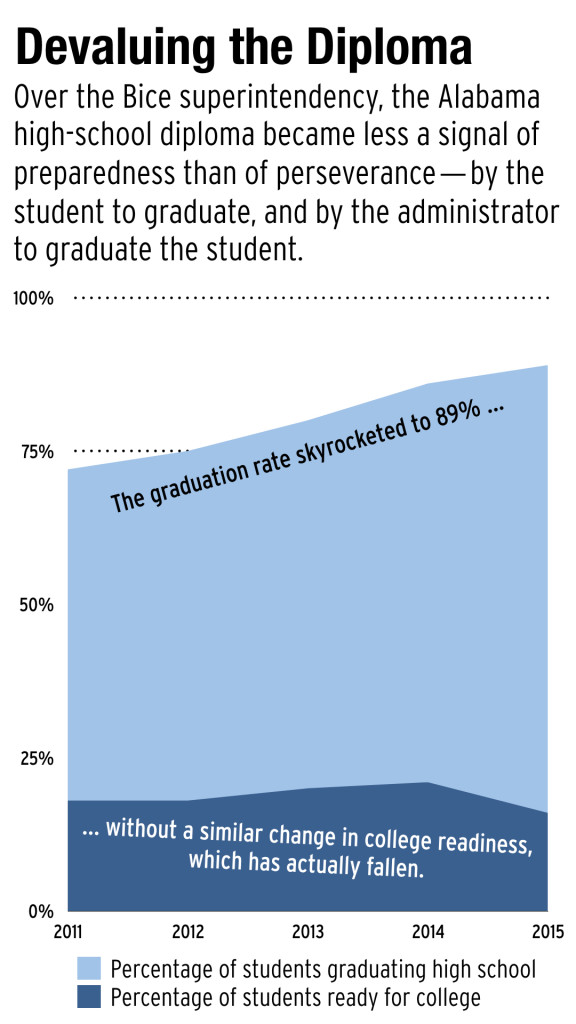
MONTGOMERY, Ala. — Last month, Tommy Bice announced his plans to step down as Alabama’s superintendent of education. Looking back on the entirety of his tenure, the Alabama Policy Institute, a conservative think tank, called into question the significance of Bice’s key achievement: the nearly 90% graduation rate of public-school students in Alabama.
The graduation rate has skyrocketed seventeen points in four years, from 72% in 2011 to 89% in 2015. To put this percentage in perspective, if the graduation rates of the other forty-nine states were to remain unchanged from 2014, then Alabama’s graduation rate would now rank third nationally.
However, API senior policy counsel Andrew Yerbey notes that Alabama has seen no positive correlation in scholastic achievement, which remains among the worst of the worst in the United States.
“When the high-school diploma has been as devalued as it has, its benefits—economic and otherwise—become a false promise,” the analysis says.
To support his argument, Yerbey cites Alabama students’ ACT test scores. The ACT’s own website defines college readiness as “about a 75% chance of obtaining a C or higher in the corresponding credit-bearing college courses…based on the actual performance of students in college.”
According to Yerby, “the percentage of Alabama students who graduated ready for college-level coursework in English, math, reading, and science was 16% in 2015, down from 18% in 2011; the national average was 28%. Additionally, 32% of Alabama public-school graduates who attend college need some type of remediation.”
Data from the National Assessment of Education Progress’ (NAEP) website, considered “the standard for measuring scholastic achievement”, does place Alabama in a more favorable light. As of 2015, only 17% of Alabama eighth-graders are proficient in math and 26% are proficient in reading—with neither score changing significantly since 2011. Both scores have remained significantly below the national average.
Furthermore, Yerby cites a report from the Urban Institute, which adjusted the 2013 scores to account for student demographics. Alabama ranked forty-eighth in the nation, ahead of only Hawaii and West Virginia.
Yerbey argues, in essence, that an Alabama high school degree has been devalued with the increased emphasis on boosting graduation rates.
“The next superintendent will have to rebuild the trust that has been lost in Alabama’s high-school diploma. This means ensuring that it reflects scholastic achievement,” Yerbey concludes. “This does not mean undue emphasis on standardized tests or a return to the misguided policies of No Child Left Behind. But it will be helpful to glance backward as we go forward, to recall what those policies were meant to combat: the soft bigotry of low expectations.”













